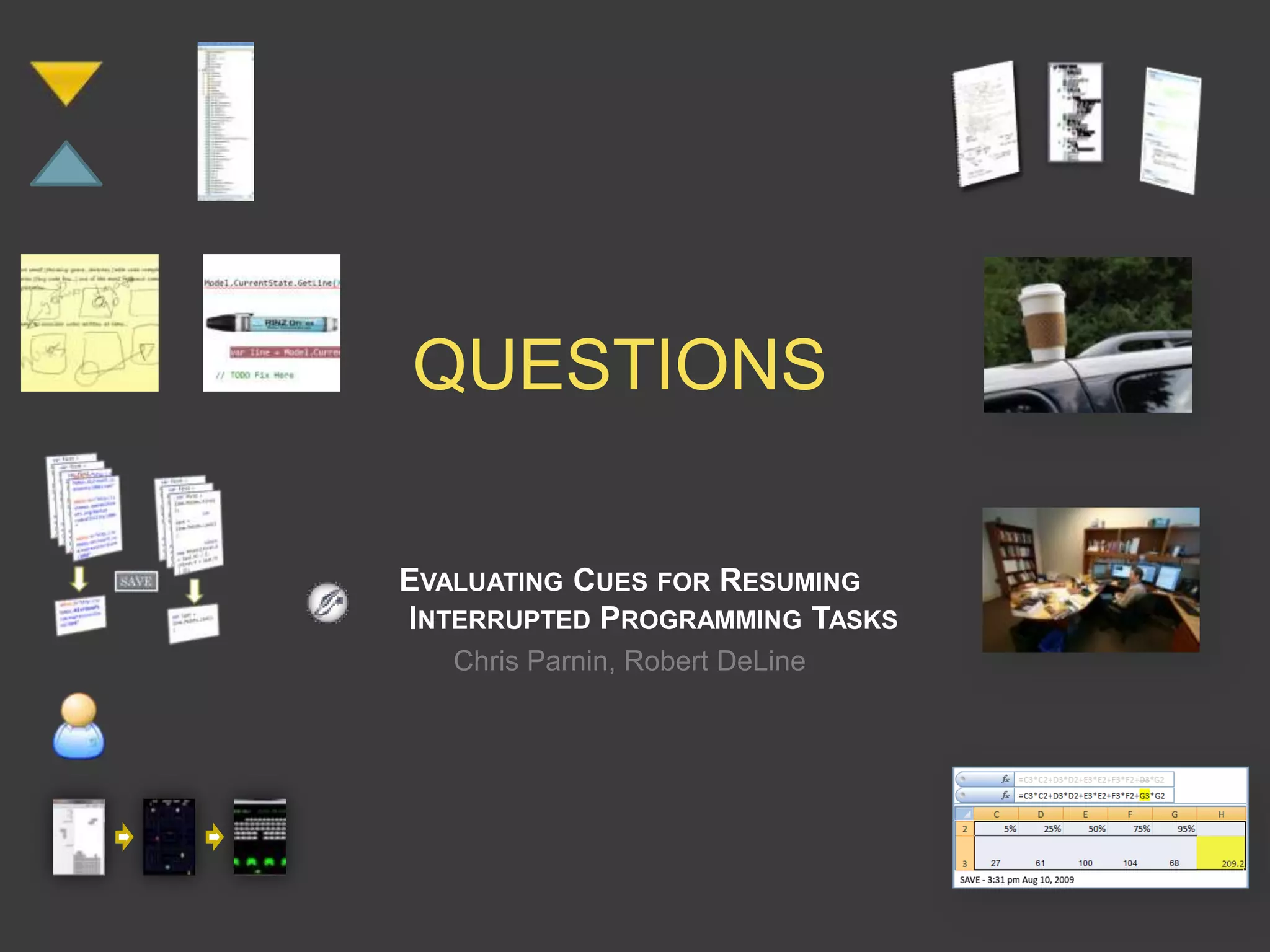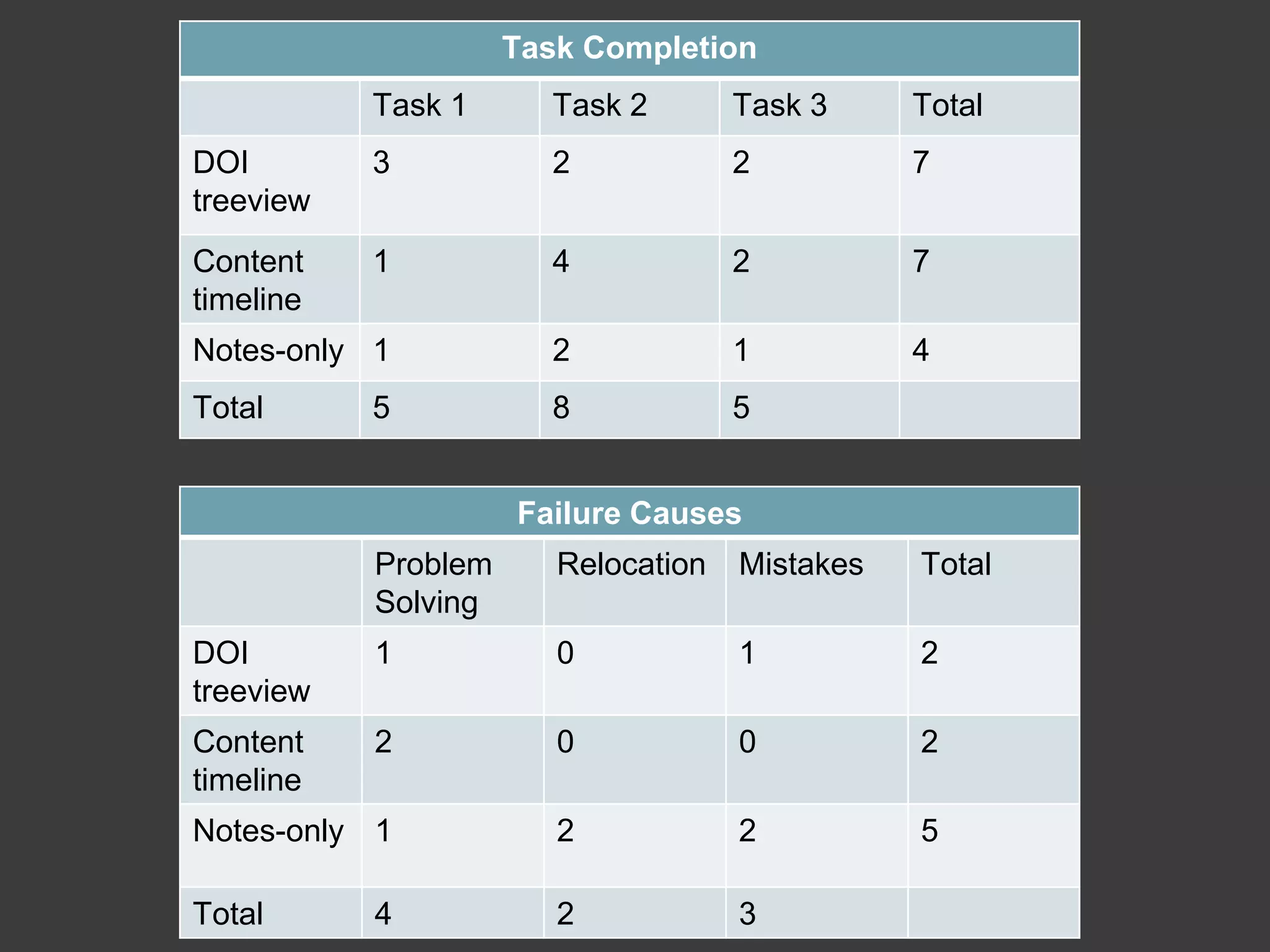1) Programmers often forget where they left off after interruptions like lunch breaks due to the large amount of information they must hold in their memory. 2) The researchers conducted a survey of programmers and experiments to evaluate strategies for resuming interrupted tasks. They found that providing cues from the programmer's recent work history was more effective than notes. 3) Specifically, a content timeline view of changed files and a difference-based integrated development environment interface helped programmers resume their tasks faster and with a higher success rate compared to only taking notes.
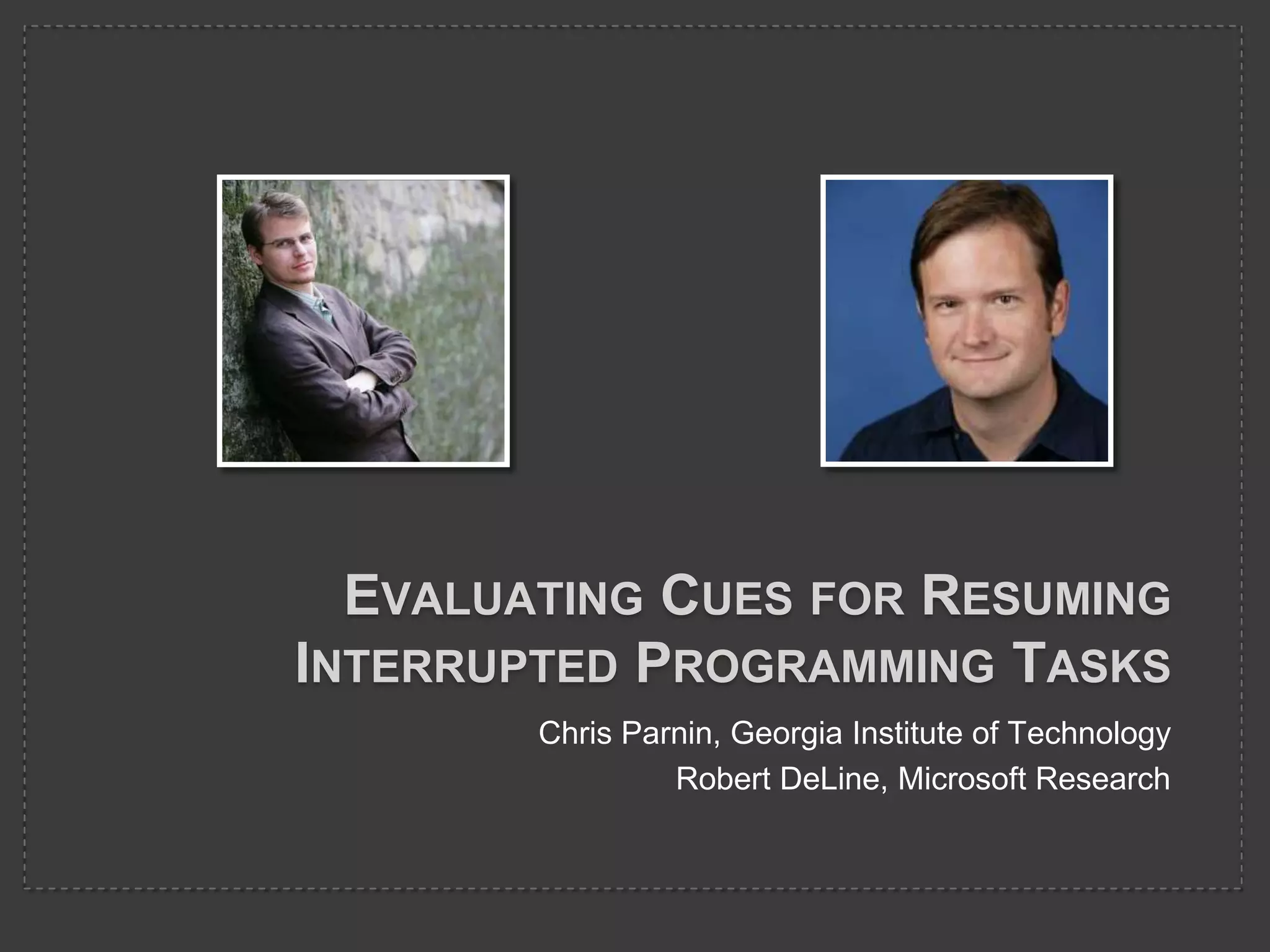
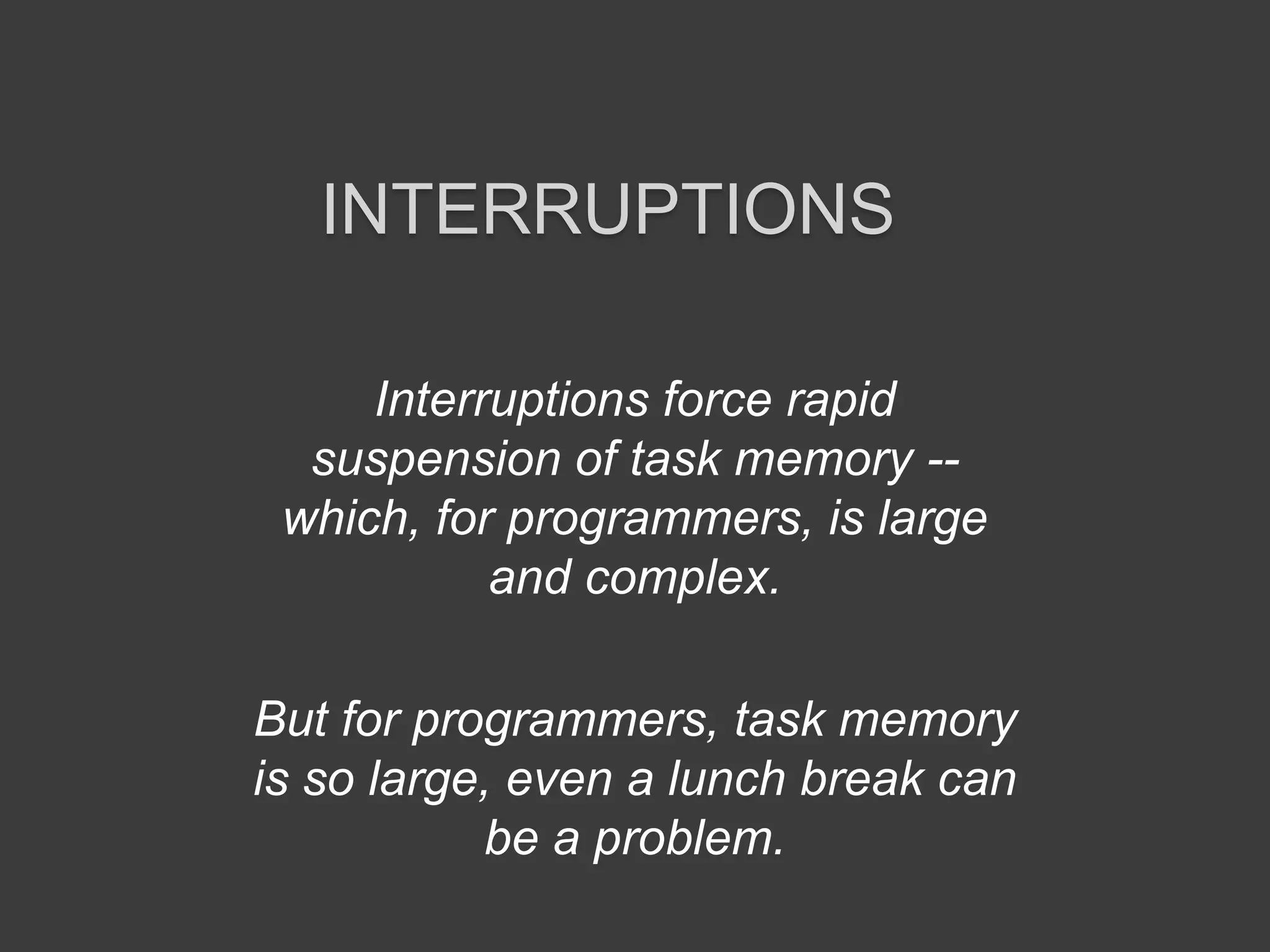

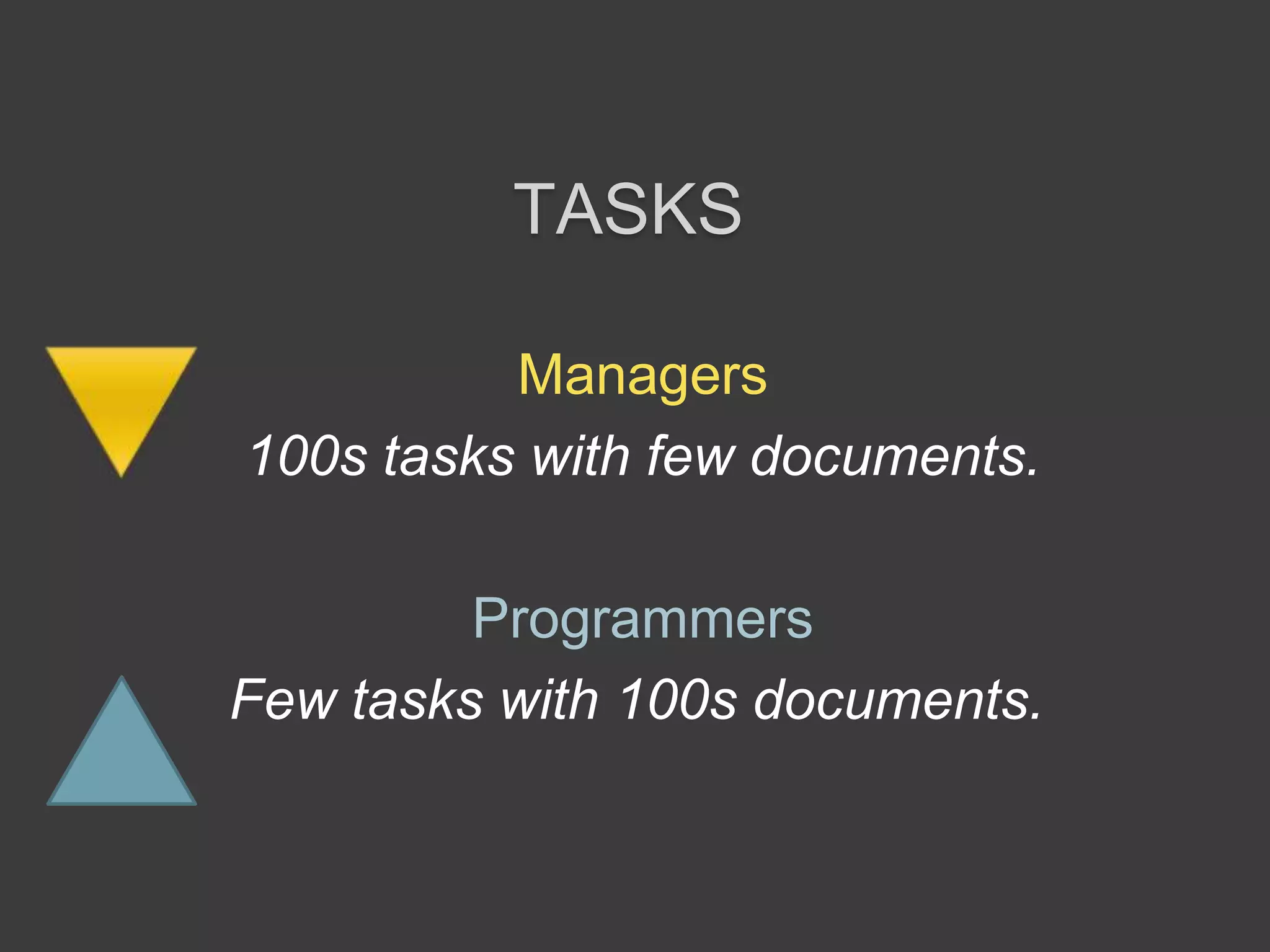
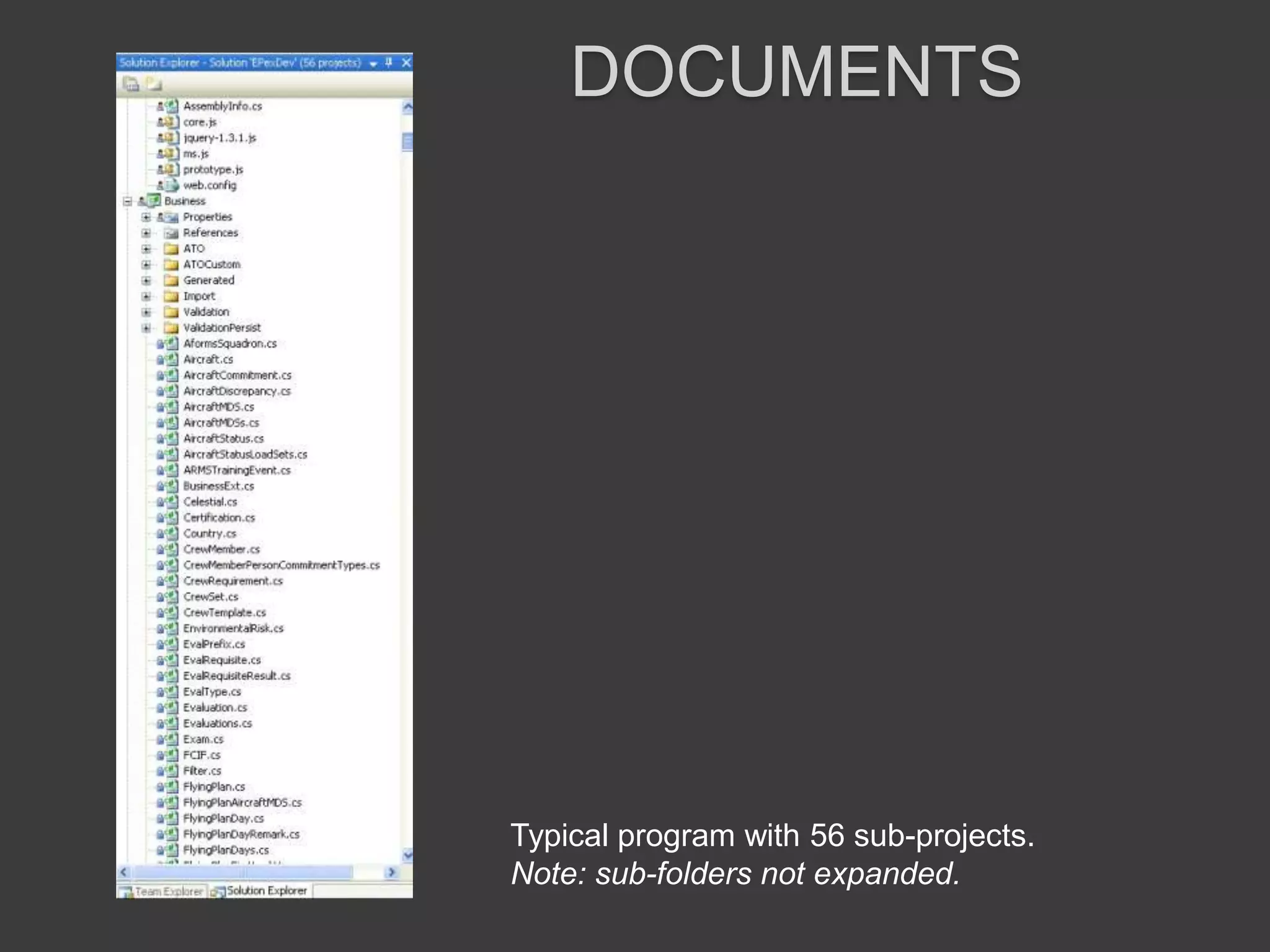
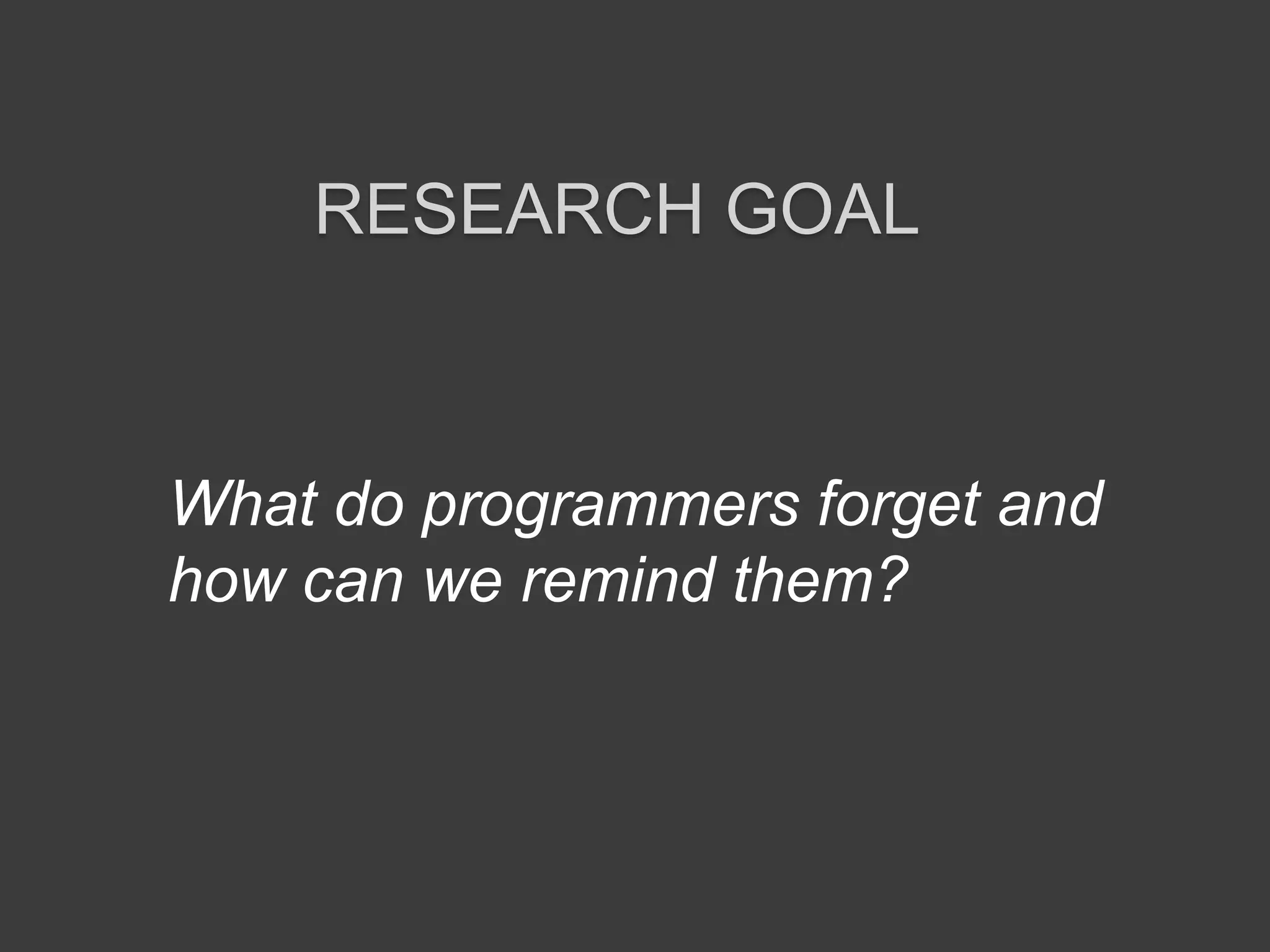



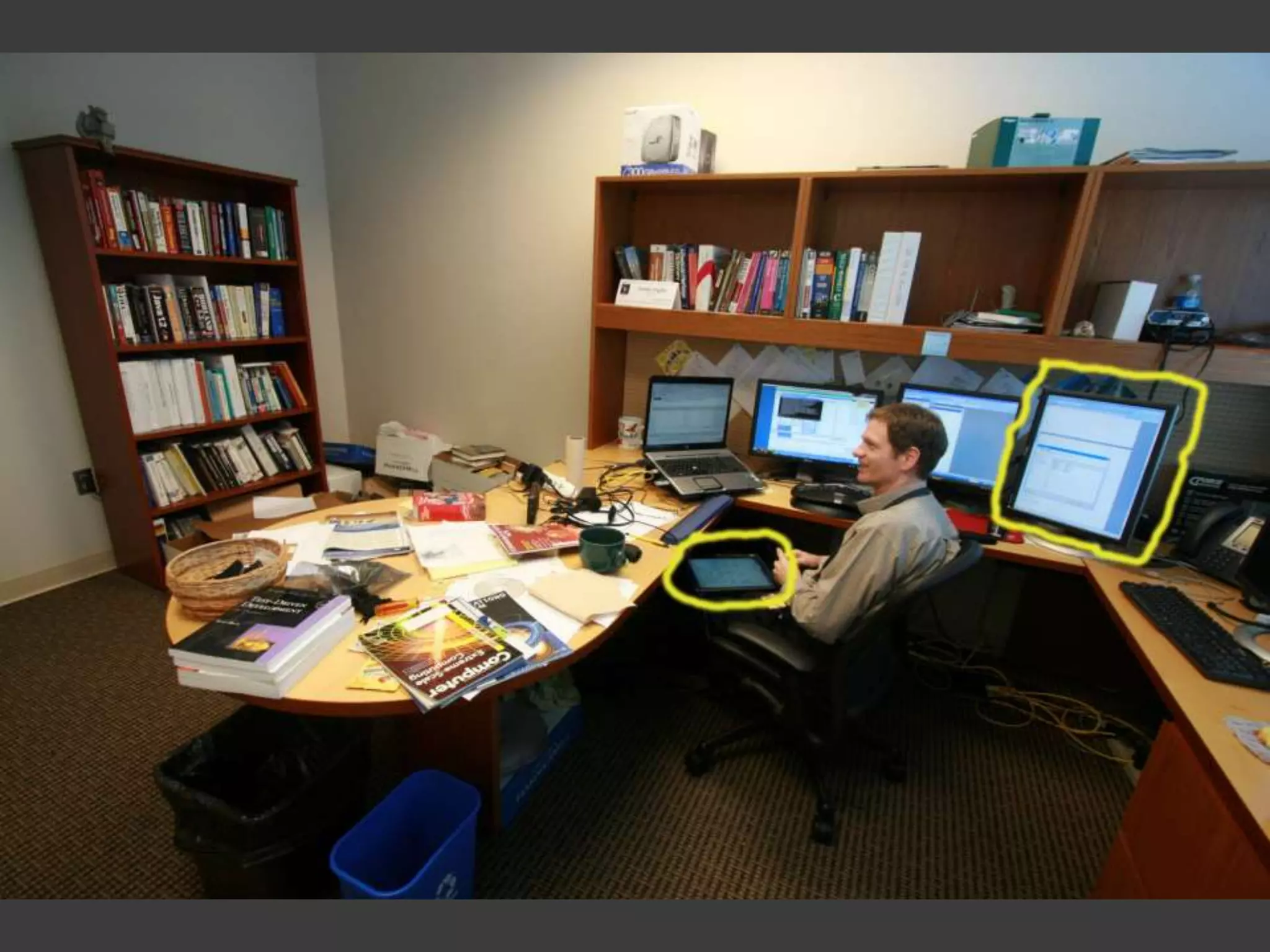
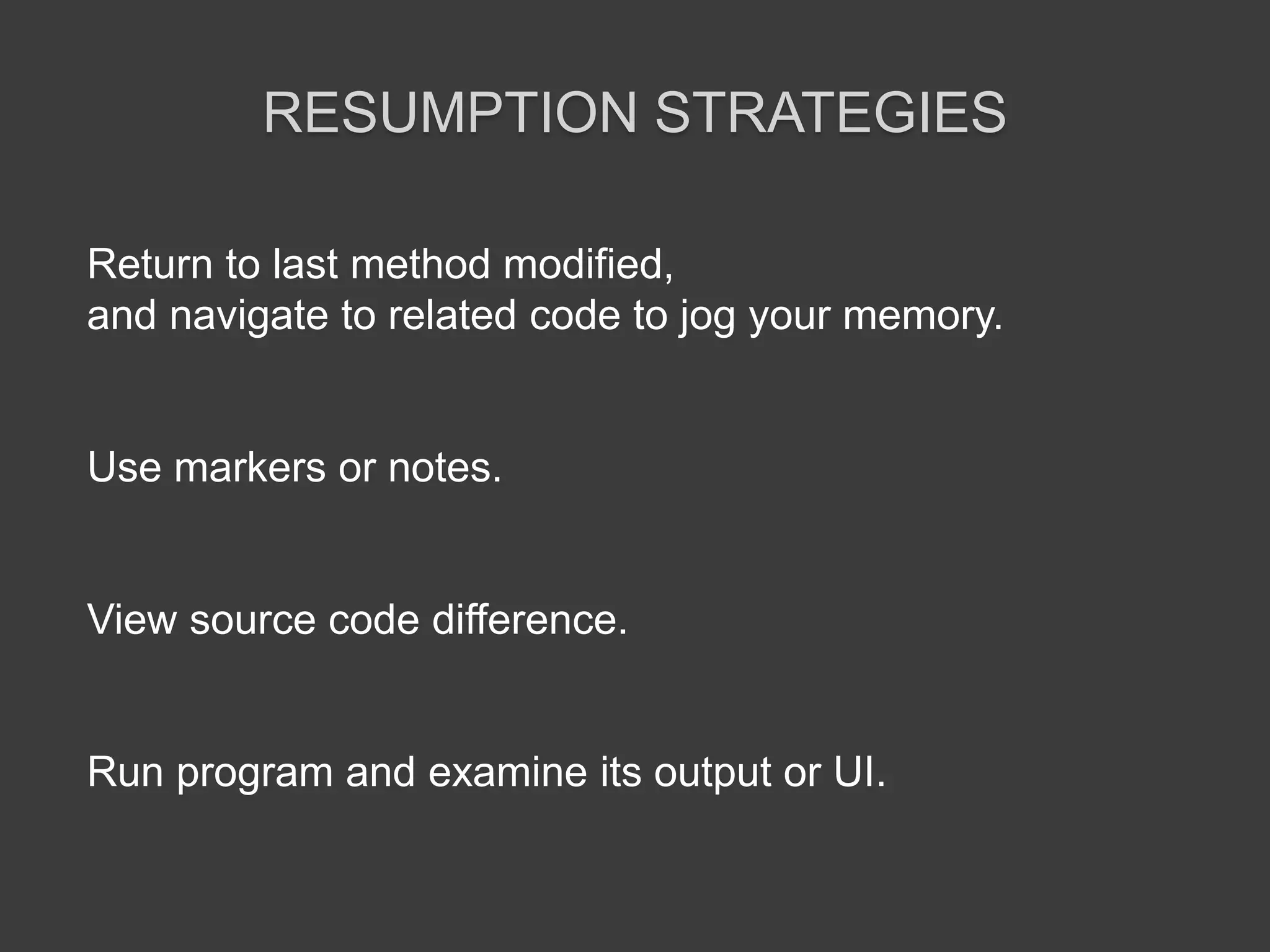
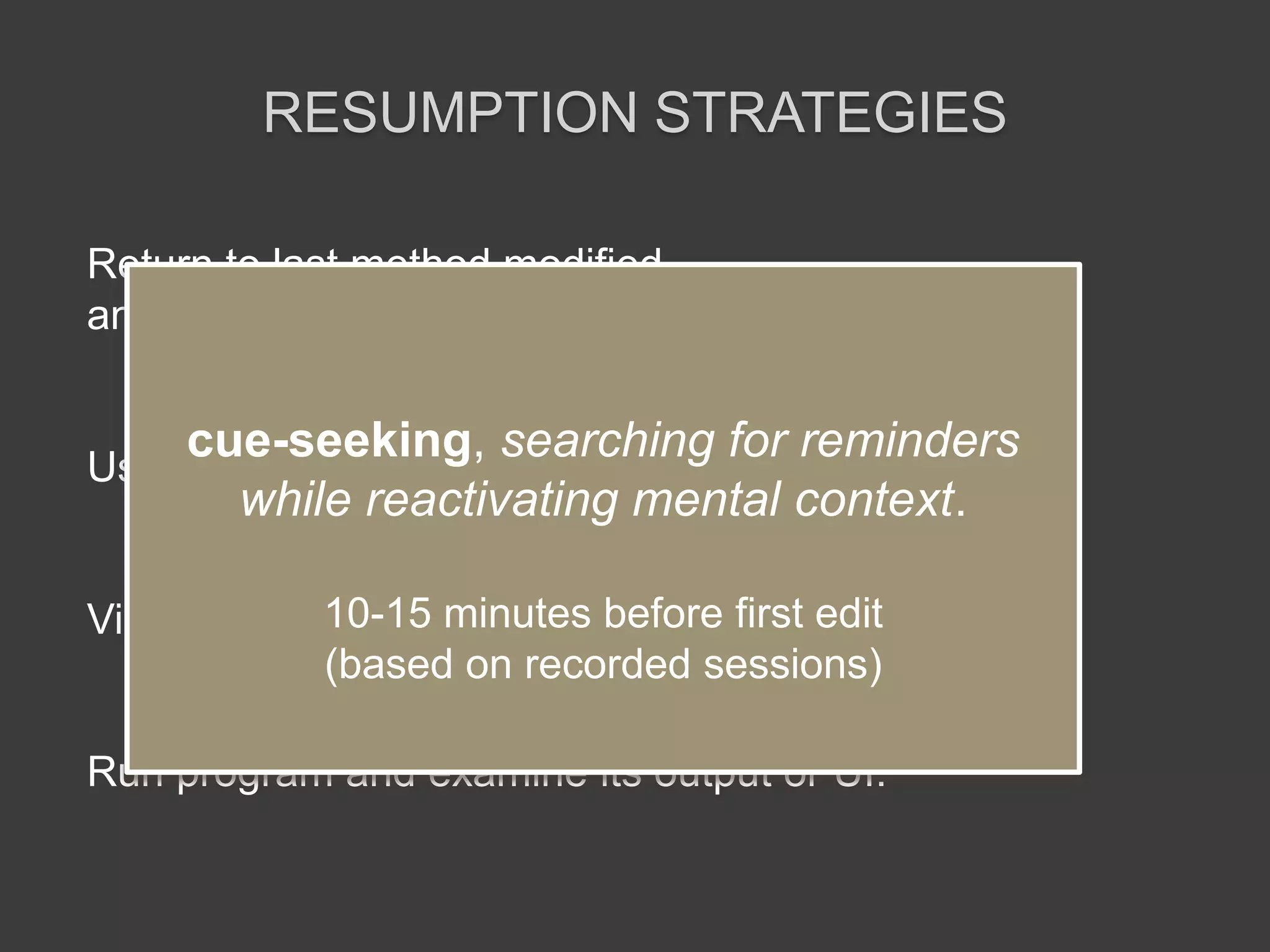

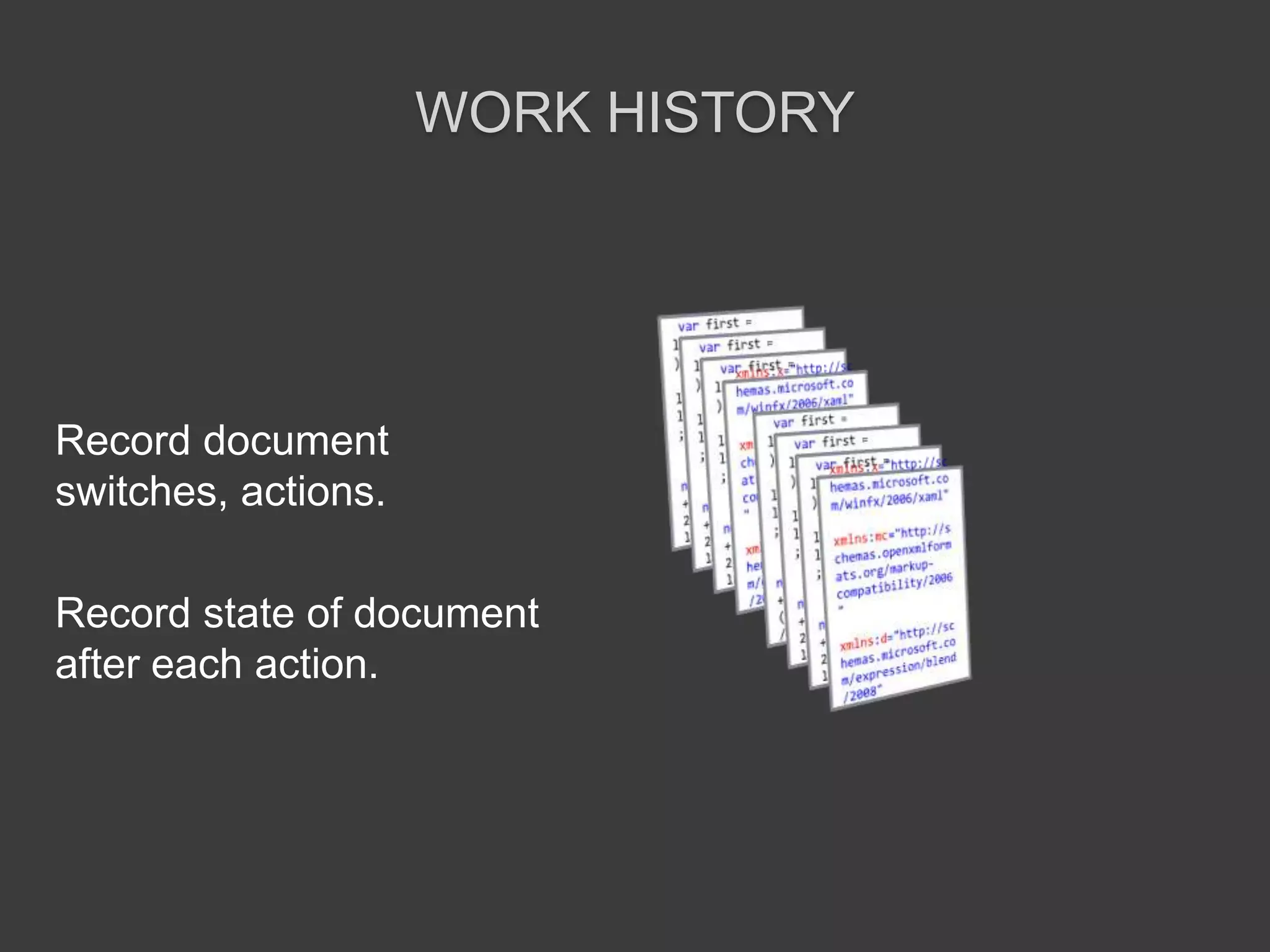

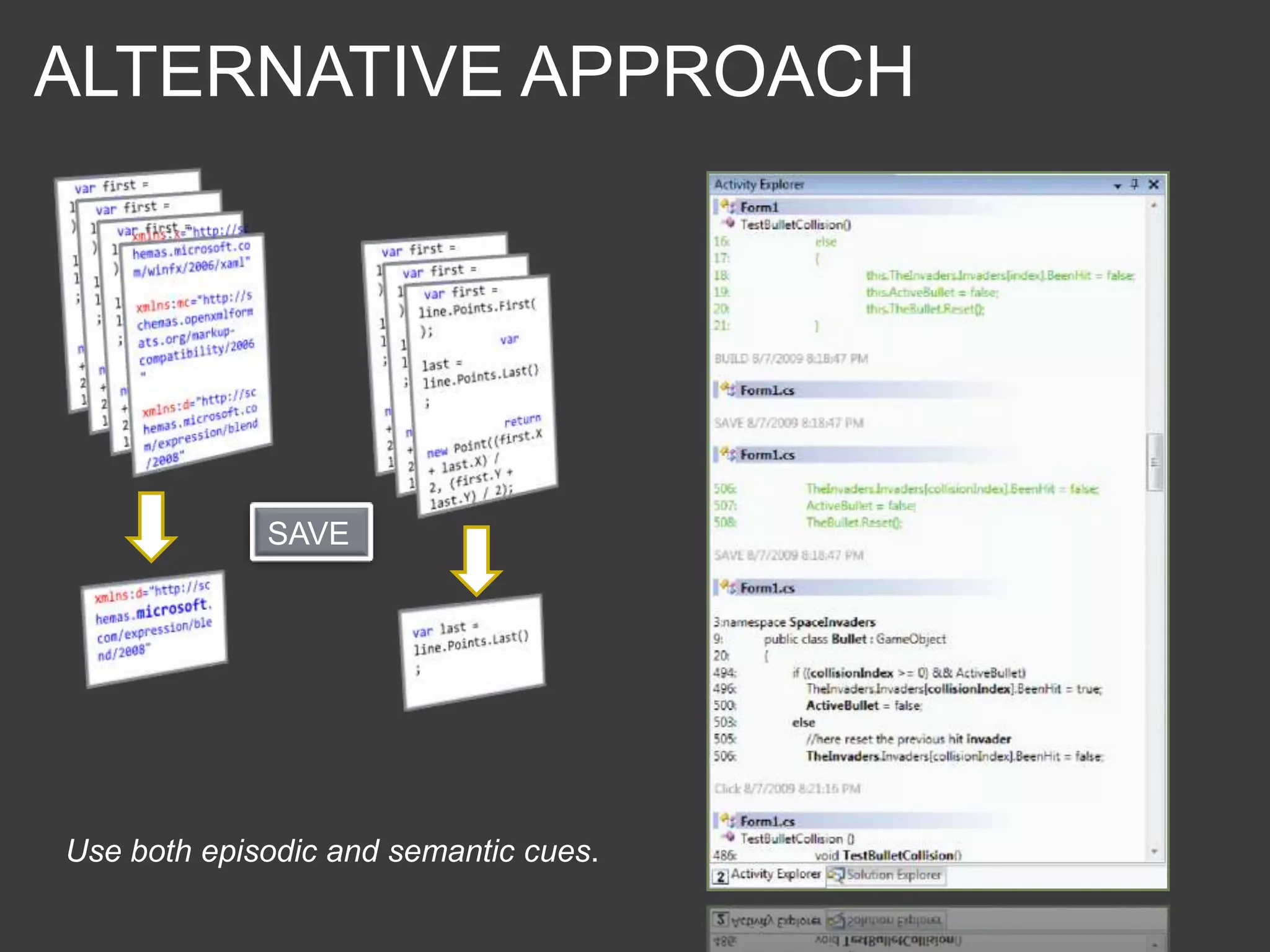
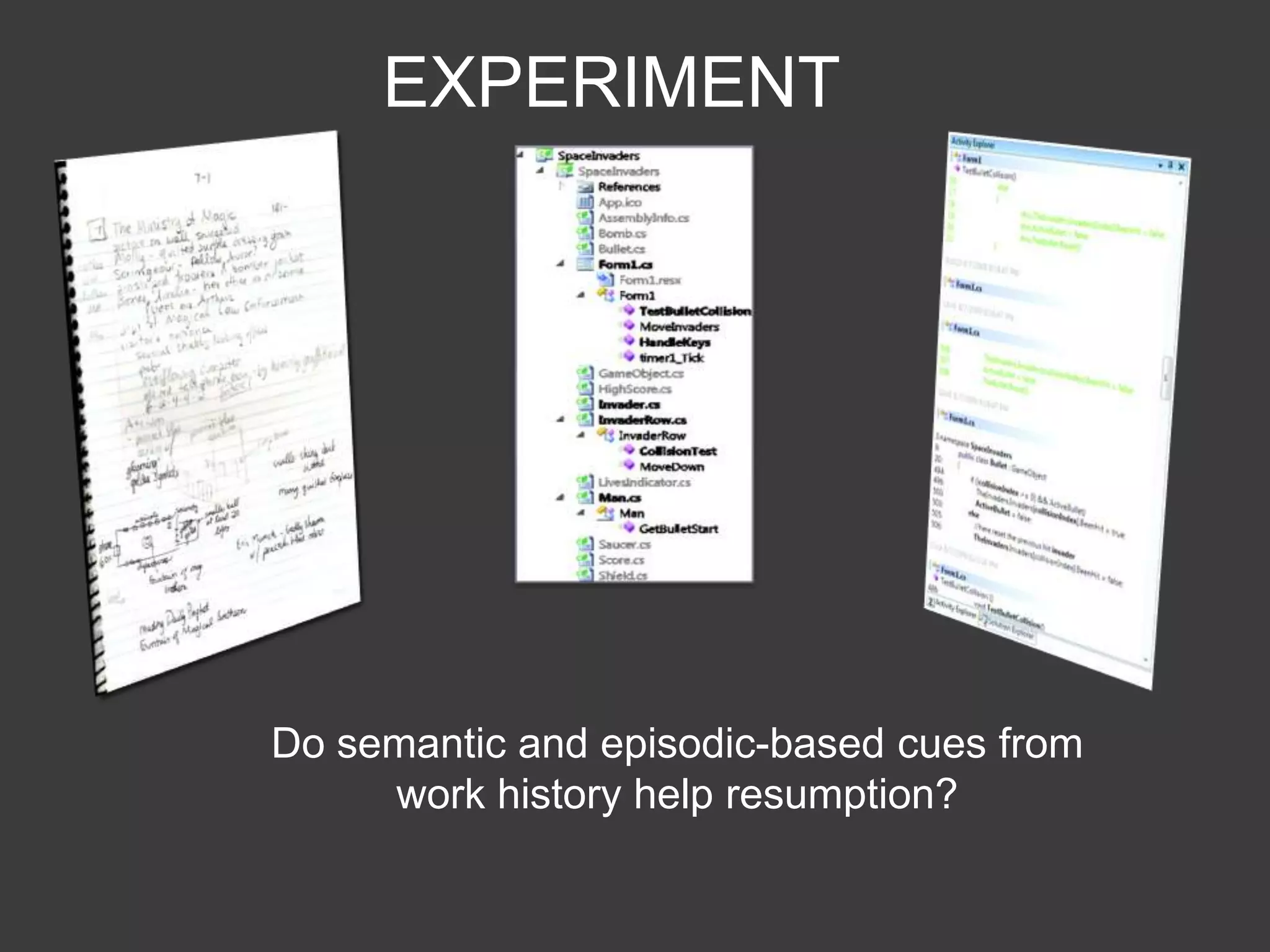
![PARTICIPANTS15 participants (one female only) Age (range 31 to 56) [39 avg.]Professional developers working in Washington Puget Sound area.](https://image.slidesharecdn.com/chi-101216194653-phpapp02/75/Evaluating-Cues-for-Resuming-Interrupted-Programming-TAsks-18-2048.jpg)


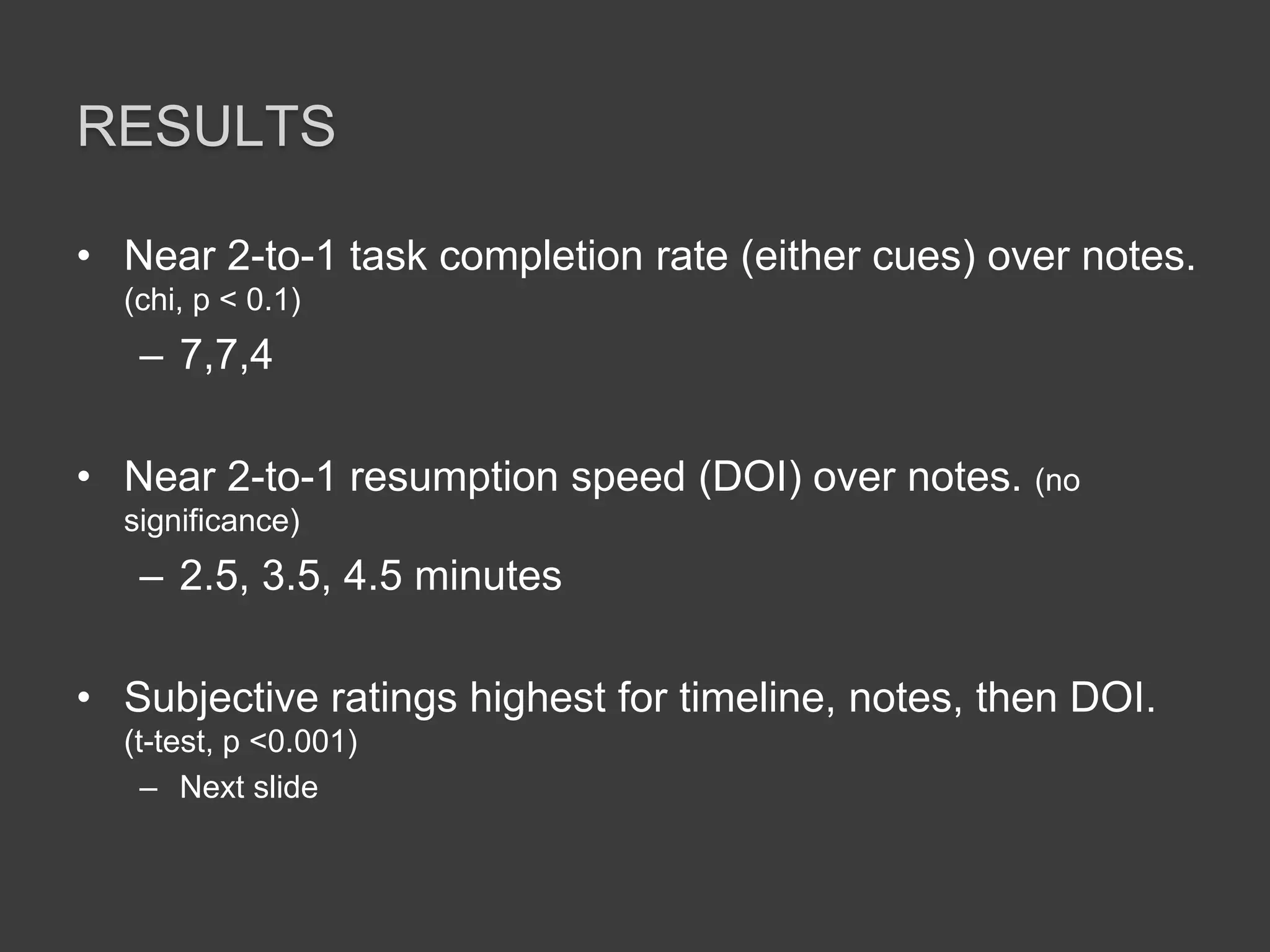
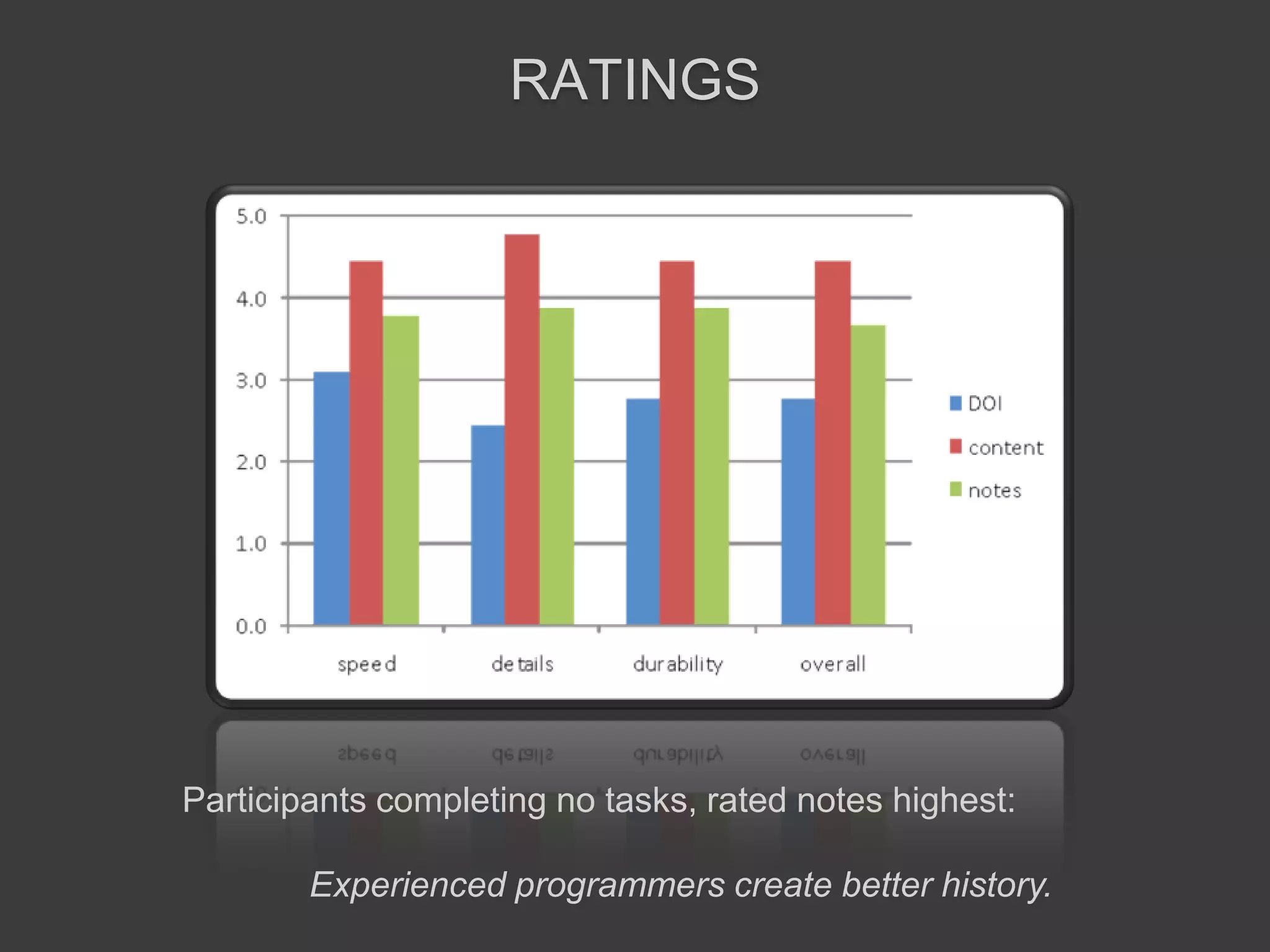


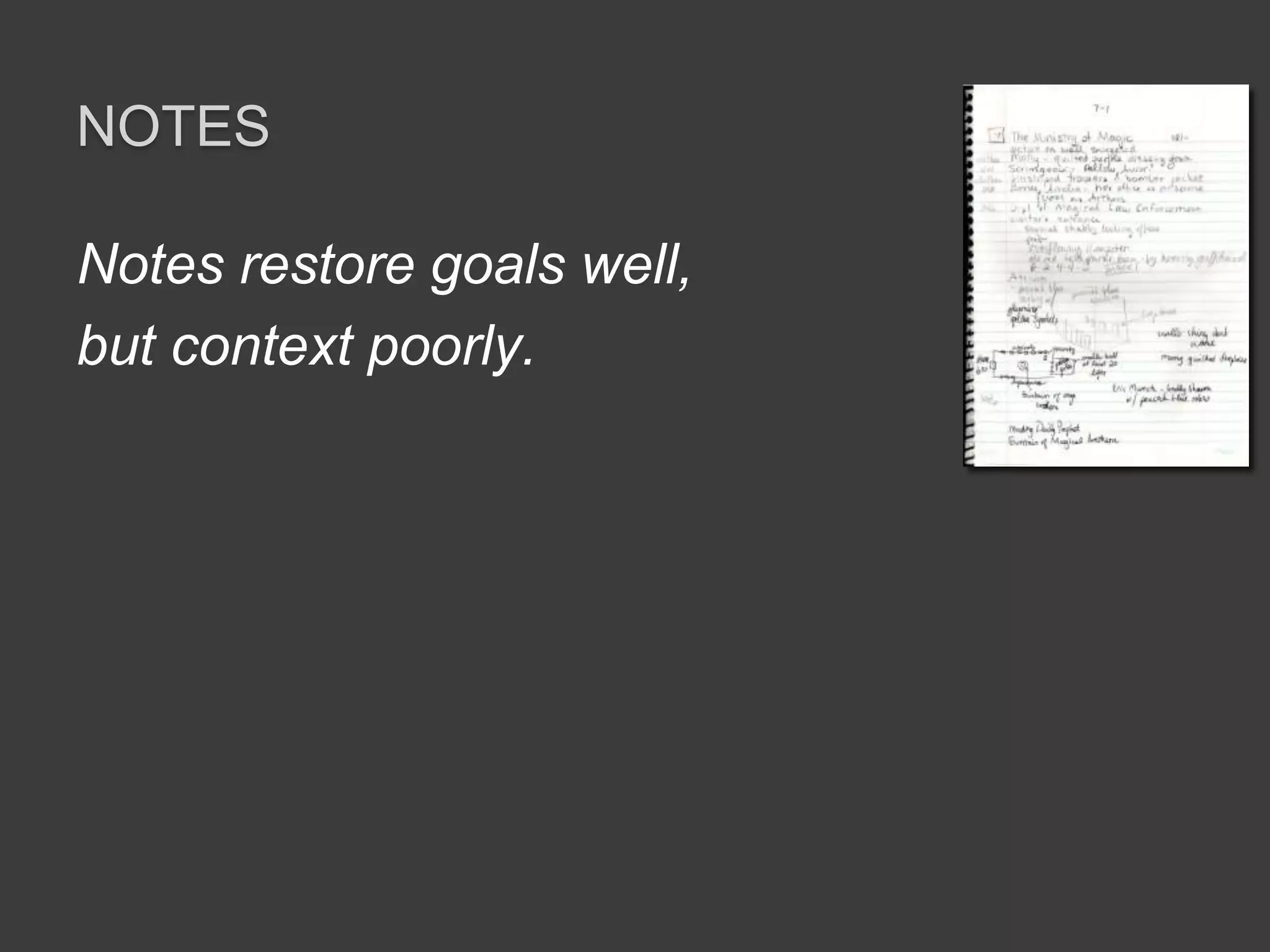
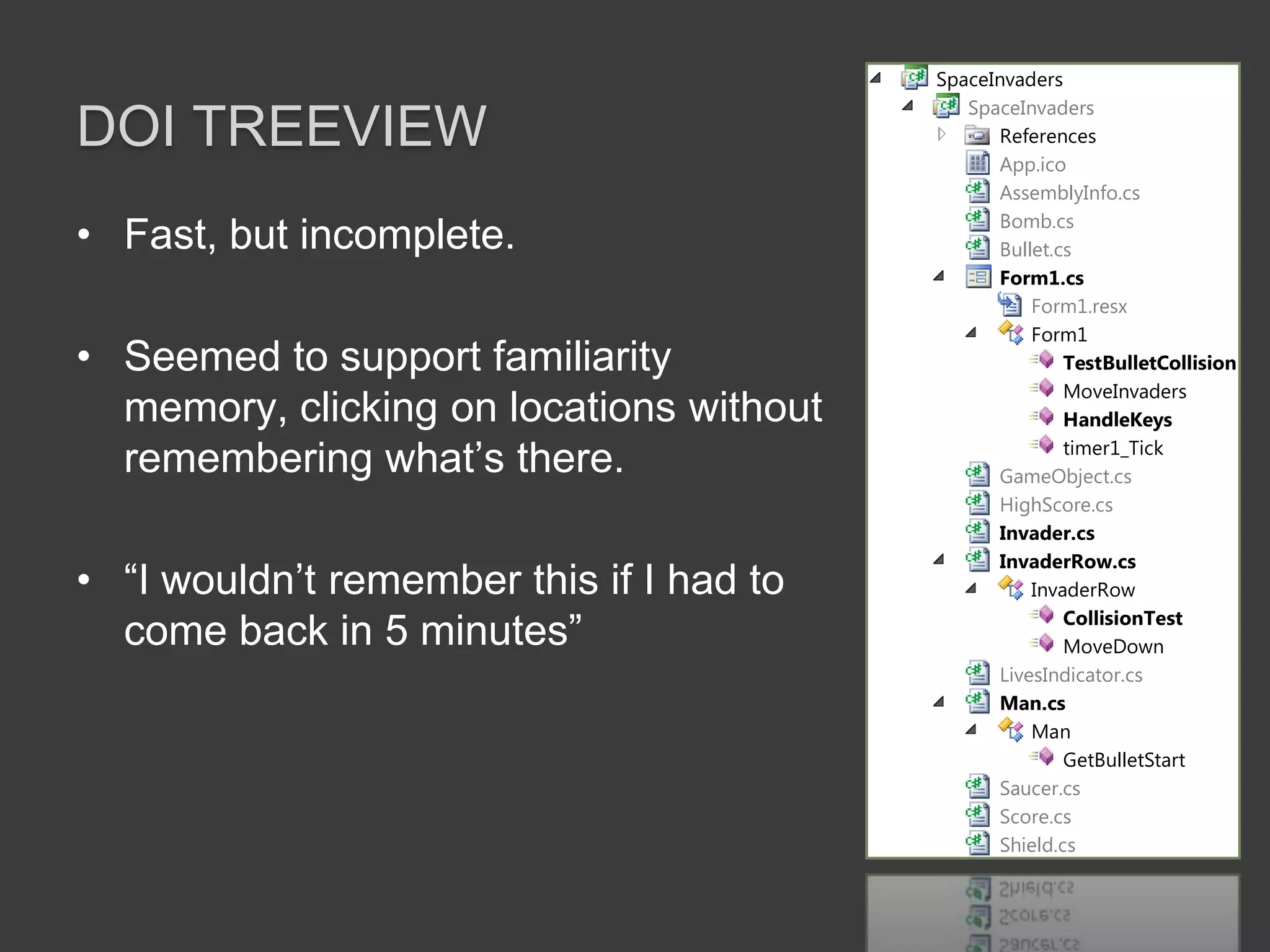
![CONTENT TIMELINESlower, but restorative.Users worked backwards in their task state with this view.Seemed to support restoring episodic and prospective memory.“The history of the [timeline] and diffs are very useful and did the most help in restarting”](https://image.slidesharecdn.com/chi-101216194653-phpapp02/75/Evaluating-Cues-for-Resuming-Interrupted-Programming-TAsks-27-2048.jpg)


